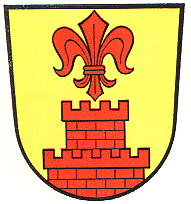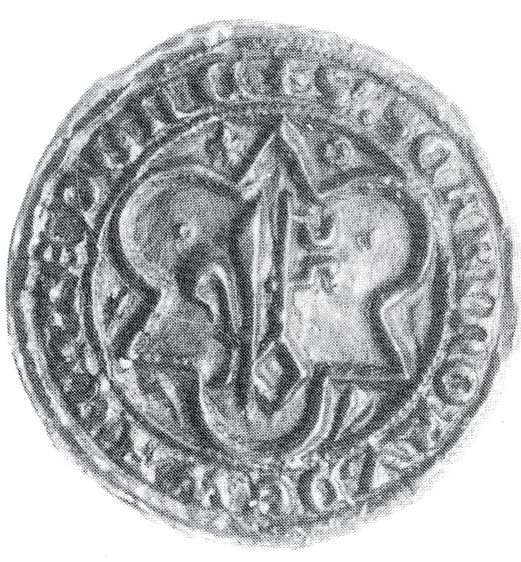Wachtendonk
This page is part of the German heraldry portal Deutsche Wappensammlung |
Heraldry of the World |
|
German heraldry:
|
Selected collector's items from Germany:
|
WACHTENDONK
State : Nordrhein-Westfalen
District (Kreis) : Kleve (until 1969 Geldern)
Additions : 1969 Wankum
Official blazon
Origin/meaning
The arms were officially granted on October 30, 1971 after the merger with Wankum, but have been used since medieval times.
Wachtendonk was a settlement on the Niers river, which became a city in the early 14th century. Wachtendonk was a possession of the Lords of Wachtendonk as a loan of the counts of Geldern. The city practically was independent, even after the sale to the counts of Kleve in 1440 and the return to Geldern in 1502. This means that neither symbols of Kleve of Geldern have been used in the seals of the city.
The oldest seal dates from 1346 and shows a fleur de lys (from the arms of the Wachtendonk family) with a key (of St. Peter, the patron saint). Already in the second seal (used from 1382-1520) the fleur de lys is placed above a tower, probably representing the city.
All later seals show the same combination.
Wankum did not have its own arms, but the only known seal of Wankum (used from 1625-1672) shows the patron saint, St. Martin on a horse with the bettlar behind him.
Contact and Support
Partners:
Your logo here ?
Contact us
© since 1995, Heraldry of the World, Ralf Hartemink 
Index of the site
Literature : Stadler, K. : Deutsche Wappen - Bundesrepublik Deutschland. Angelsachsen Verlag, 1964-1971, 8 volumes; Frankewitz, S. en G. Fenner : De zegels der steden en dorpen in het overkwartier van Gelre/Die Siegel der Städte und Dörfer im geldrischen Oberquartier. Venlo, z.j. 291 blz.(bilingual); Nagel, R.; Rheinisches Wappenbuch, Köln, 1986.













